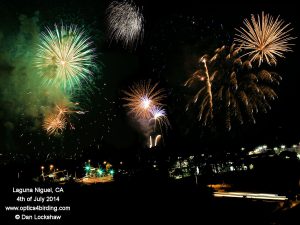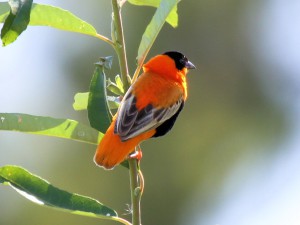Happy 4th of July 2014 fireworks
We went to see the fireworks near Laguna Niguel Regional Park for 4th of July. Optics4Birding is located in southern California in the city of Irvine. I live about 15 minutes from work and near the Laguna Niguel Regional Park. The hills surrounding this area open the possibility for seeing many of the firework displays in South Orange County.
From where we were we could see four different shows at once. It was really impressive. I have never tried to take photos of fireworks before so it also became a learning lesson. A little reading on the internet gave me instructions for doing this. Shortly before dark we hiked up a dirt road in the hills next to our local high school and setup my camera on a tripod. Next year’s photos promise to be much better now that I have a bit of experience with this.
Since I do quite a bit of photography at night for our owling.com web site, I hoped that this would not be too difficult. Still this is a very different type of photography. Photographing the owls at night is done at closer range using a flash. Photographing the fireworks require extended shutter times with a camera on a tripod. All considered, this is just one more method of taking photographs.
I tried several different settings to do this. The best results came from setting my ISO between 100-400 and taking a timed photo of 5 to 8 seconds. I used my 100-400mm Canon lens so I could shoot some of the distant fireworks too. The shots were taken with the aperture set at 5.6. For a first try at this, the photos were just fine and I was happy.
Happy 4th of July to all from Optics4Birding. We hope to see many of you out looking at nature this upcoming year. Enjoy the photos and try to get outdoors as much as you can. We believe at Optics4Birding that if we all enjoy the outdoors, we will protect it and its precious life.

Click image to enlarge and see more photos




















